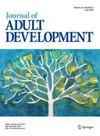使用跨理论方法识别两个年龄组之间焦虑、抑郁症状和心理健康决定因素的差异
IF 1.8
3区 心理学
Q3 PSYCHOLOGY, DEVELOPMENTAL
引用次数: 0
摘要
摘要:本研究的目的是利用两个年龄组的心理健康和疾病双连续模型,比较抑郁和焦虑症状和心理健康的社会、情感和认知决定因素。双连续模型提出,精神健康和精神疾病不是同一光谱的两端,实际上是两个独立但相关的光谱。本横断面研究采用多年龄组比较方法,以确定精神健康和精神疾病双连续模型的风险因素和保护因素的相对预测优势。参与者(n = 458: 251名16-25岁的人,207名35-64岁的人)完成了一项在线调查,测量了抑郁、焦虑症状和心理健康的结果变量。来自心理学三个概念领域的独立变量:(1)积极心理学:乐观、悲观和成就;(2)情绪调节:认知重评和表达抑制;(3)人际关系理论:归属和与父母/孩子的关系,以确定这些结果变量的决定因素。全变量模型解释了抑郁症状58-68%的差异,心理健康77-80%的差异,焦虑症状26-43%的差异。对于这两组人来说,在这些模型中,最能预测心理健康的因素是成就。在这些模型中,心理疾病症状的最强预测因子在两组之间存在差异:年轻组的归属感和年长组的成就。以归属感和成就感为目标的项目在促进这些群体的心理健康和减少心理疾病方面非常有效。干预措施需要在实施前进行背景调查,以确定不同年龄组心理健康和疾病的驱动因素。本文章由计算机程序翻译,如有差异,请以英文原文为准。
Using a Trans-theoretical Approach to Identify Differences in Determinants of Anxiety and Depression Symptoms and Mental Wellbeing Between Two Age Groups
Abstract The objective of this research was to compare social, emotional, and cognitive determinants of depression and anxiety symptoms and mental wellbeing using the two-continua model of mental health and illness in two age groups. The two-continua model proposes that mental health and mental illness are not two ends of the same spectrum but are, in fact, two separate but related spectrums. This cross-sectional study used a multi-age group comparison approach to identify the relative predictive strengths of risk and protective factors for the two-continua model of mental health and mental illness. Participants ( n = 458: 251 16–25 year olds, and 207 35–64 year olds) completed an online survey that measured the outcome variables of depression and anxiety symptoms and mental wellbeing. Independent variables from three conceptual areas in psychology—(1) positive psychology: optimism, pessimism, and accomplishment; (2) emotion regulation: cognitive reappraisal and expressive suppression; and (3) interpersonal theories: belonging and relationship with parent/child—were measured to ascertain the determinants of these outcome variables. The all-variables models explained 58–68% of the variance in depression symptoms, 77–80% in mental wellbeing, and 26–43% in anxiety symptoms. For both groups, the strongest predictor of mental wellbeing in these models was accomplishment. The strongest predictors in these models of mental illness symptoms differed between groups: belonging in the younger group and accomplishment in the older group. Programs targeting belonging and accomplishment could be highly effective in promoting mental wellbeing and reducing mental ill-health for these groups. Interventions require contextual investigation to locate drivers of mental wellbeing and illness for different age groups prior to implementation.
求助全文
通过发布文献求助,成功后即可免费获取论文全文。
去求助
来源期刊

Journal of Adult Development
PSYCHOLOGY, DEVELOPMENTAL-
CiteScore
3.90
自引率
4.50%
发文量
43
期刊介绍:
The Journal of Adult Development is an interdisciplinary journal covering development in early adulthood, midlife, and later adulthood. The Journal supports innovative theoretical and empirical articles that help direct the future of our field. Critical issues include the importance of life-long education, work and family changes, and physical and mental health influencing adult development. In addition, the impact of personality, emotions, cognition, and biomarkers are areas of interest. The Journal of Adult Development emphasizes the importance of interindividual differences and contextual issues influencing adult development. Interventions that promote optimal development throughout the adult life span are also welcome.
 求助内容:
求助内容: 应助结果提醒方式:
应助结果提醒方式:


